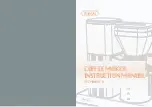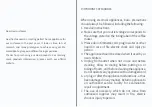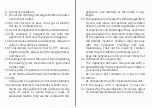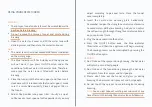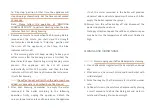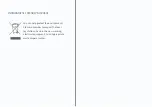
Finally, empty the water in the boiler as the operation
mentioned above.
Great tasting coffee starts with fresh water. Where local
water is of poor quality, you may wish to use bottled or
filtered water. Distilled water is not recommended.
If you buy large portions of coffee beans, separate them
into one- or two-week portions and store them in tinted,
airtight containers. Refrigeration is not recommended
since condensation tends to form on beans whenever the
container is opened.
The best cup of coffee comes from coffee beans that are
properly ground just before brewing. Be sure to select a
medium grind, which is ideal for automatic drip coffee
makers. We recommend using the Gevi On Conical Burr
Coffee Grinder with Integrated Scale.
7.
REMOVING MINERAL DEPOSITS
Fill the water tank with water and descaler to the MAX
level in the gauge of coffee maker (the scale of water and
descaler is 4:1, the detail refers to the instruction of
descaler. Please use “household descaler”, you can use
the citric acid instead of the descaler (the one hundred
parts of water and three parts of citric acid).
Push carafe on warming plate, pay attention to let center
line of carafe aligns with that of funnel.
Hold and press the On/Off button for about 3 seconds,
the blue indicator will change to illuminating solidly from
flashing and then the appliance will begin working.
The descaling is finished when the solution in the water
tank being boiled away. Empty the solution in the boiler
as the operation mentioned above.
Then turn off the appliance and refill the water tank with
clean water.
Rinse by operating the appliance with water at least 3
To keep your coffee maker operating efficiently, you should
clean away the mineral deposits left by the water regularly
according to the water quality in your area and the frequency
use the appliance, the detail is as follows:
1.
2.
3.
4.
5.
6.
HINTS FOR GREAT-TASTING COFFEE
1.
2.
3.

